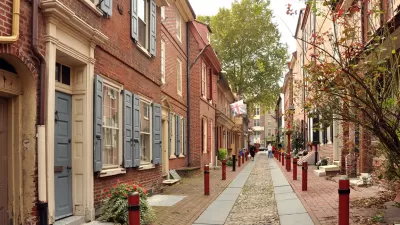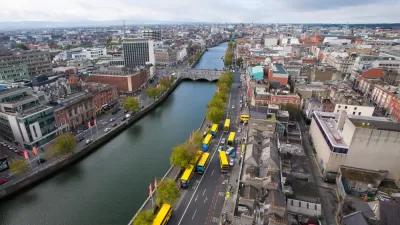In his latest two contributions from the south of France, Chuck Wolfe reminds urbanists of the backdrop of the human dimension of affinity, conversation and daily rituals that stand behind the physical, human scale.

In two Huffington Post articles, Wolfe uses photographs and stories of small-scale interactions and daily rituals to go behind the readily ascertainable built environments of cities and towns
He stresses that every urbanist should remember that "[t]he physical city means less without the stories behind building facades":
Sometimes we only learn such lessons while abroad, when acclimating to a new, temporary neighborhood, or when answering a question as simple as the one just stated. After all, the human dimension, of affinity and conversation is broader, and arguably more important, than the human scale that we hear so much about.
In one example, Wolfe describes how inadvertent documentation of a mixed-use building moved from an awkward encounter to international affinity over old coins and travel.
Two more examples describe the daily rituals of small-scale commercial transactions, noting how these "simple interactions offer valuable lessons for how to live in neighborhoods and cities... as if time had turned back to something that has always been or something that we are always searching for".
His summary reminder in both articles: Recall the real dynamics of city life, the connections behind the built environment that we, at first, more readily see.
FULL STORY: How We Learn From Urban Immersion

Maui's Vacation Rental Debate Turns Ugly
Verbal attacks, misinformation campaigns and fistfights plague a high-stakes debate to convert thousands of vacation rentals into long-term housing.

Planetizen Federal Action Tracker
A weekly monitor of how Trump’s orders and actions are impacting planners and planning in America.

San Francisco Suspends Traffic Calming Amidst Record Deaths
Citing “a challenging fiscal landscape,” the city will cease the program on the heels of 42 traffic deaths, including 24 pedestrians.

Defunct Pittsburgh Power Plant to Become Residential Tower
A decommissioned steam heat plant will be redeveloped into almost 100 affordable housing units.

Trump Prompts Restructuring of Transportation Research Board in “Unprecedented Overreach”
The TRB has eliminated more than half of its committees including those focused on climate, equity, and cities.

Amtrak Rolls Out New Orleans to Alabama “Mardi Gras” Train
The new service will operate morning and evening departures between Mobile and New Orleans.
Urban Design for Planners 1: Software Tools
This six-course series explores essential urban design concepts using open source software and equips planners with the tools they need to participate fully in the urban design process.
Planning for Universal Design
Learn the tools for implementing Universal Design in planning regulations.
Heyer Gruel & Associates PA
JM Goldson LLC
Custer County Colorado
City of Camden Redevelopment Agency
City of Astoria
Transportation Research & Education Center (TREC) at Portland State University
Jefferson Parish Government
Camden Redevelopment Agency
City of Claremont




























